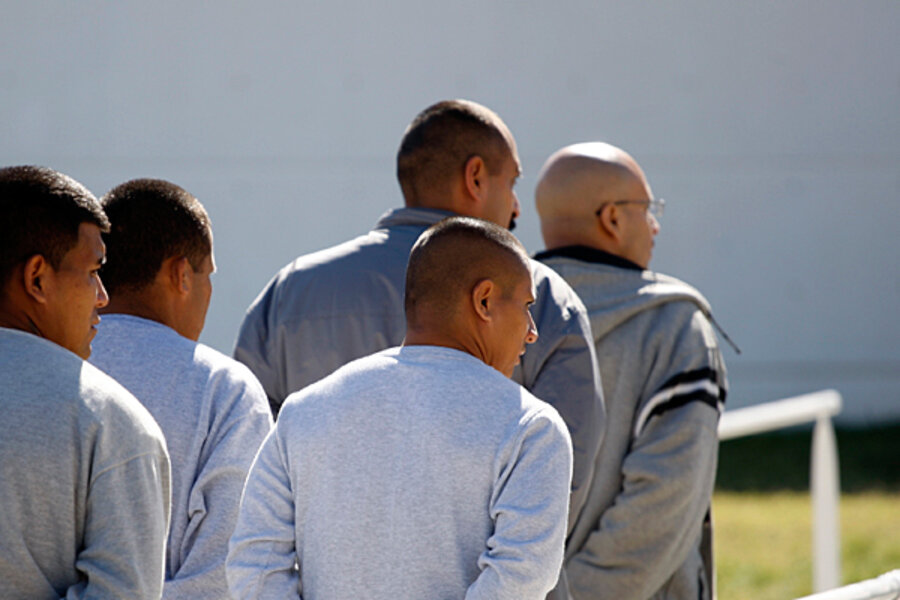Is Latin America punishing nonviolent drug offenders too harshly?
Loading...
| Mexico City
If Latin American justice systems struggle with terribly high impunity rates, if penal systems are so often plagued with problems of severe overcrowding, why do countries in the region frequently punish nonviolent drug possession and trafficking harsher than even rape or murder?
A new report reveals that punishments in Latin America for drug-related crimes – cultivation, use, or trafficking – have become as severe as those for violent offenses. Sometimes even more so.
The maximum sentence for drug trafficking in Bolivia is 25 years, compared with 20 years for homicide. Colombia’s maximum sentence for drug trafficking is 30 years, while the maximum punishment for rape stands at 20 years. And minimum sentences for drug-related crimes in Peru climbed from 2 years in 1970 to 25 years today.
The report, “A Punitive Addiction: The Disproportionality of Drug Laws in Latin America,” produced by the Bogotá-based Center for Law, Justice, and Society (Dejusticia), tracks the path of seven Latin American countries in creating anti-drug legislation.
The number of laws and the severity of penalties attributed to drug production, consumption, trafficking, or sale, have risen steadily since the 1950s. That’s left the region with a penal system that disproportionately attacks nonviolent drug-related crimes, the Dejusticia researchers say.
“This greater severity with which drug-related crimes are repressed ... doesn’t meet any criteria of proportionality,” meaning the punishment matches the infraction, according to the report.
'Sentencing family'
Minimum and maximum sentences for drug crimes in Latin America have climbed sharply since the 1980s – around the same time the United States launched the so-called “war on drugs” and pressured the region, especially producer nations, to join the fight.
Beginning in those years, Mexico and Peru instituted especially drastic changes to maximum penalties, raising them from 15 years to 40 years and 35 years, respectively.
The question of who gets jailed for what crime is of special importance in Latin America, where jails are often extremely overcrowded and justice systems struggle to reach their objectives.
Prisons in Latin America are often packed with nonviolent offenders who violated drug laws and are serving out long sentences – an issue that has led El Salvador, for example, to consider alternative punishments for drug offenders, such as a bracelet-based parole program.
Jails in El Salvador, built for a few hundred people, are filled with more than 1,000 offenders. Conditions are dismal: no electricity, no potable water, not even a cot on which to sleep.
In Ecuador, Analía Silva, a mother of two, served eight years in prison for selling drugs. Ecuador has some of the region’s toughest laws when it comes to drugs: Drug-related crimes without violence can receive the same sentence as murder.
“When they sentenced me, and when they sentence every woman, they’re not sentencing only the person who committed the crime but also her family; they’re also sentencing her children,” Silva said in a video that is part of the report.
And while tens of thousands of people go to jail on drug-related charges in Latin America each year, much of the region cannot keep up with the investigation and punishment of violent offenders. For example, in Mexico the justice system has the capacity to pursue some 4,000 cases of homicide annually but – with the ongoing drug war – homicides have risen to some 25,000 each year, according to research firm Mexico Evalua.
“People end up in jail for many years” for drug offenses, said Kristel Mucino, communications director with the Washington Office on Latin America, which is promoting the Dejusticia report. “It’s irrational and unjust. All punishment should be proportional.”







